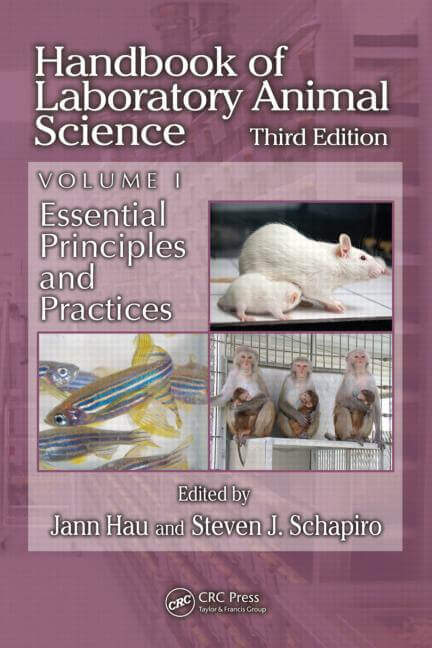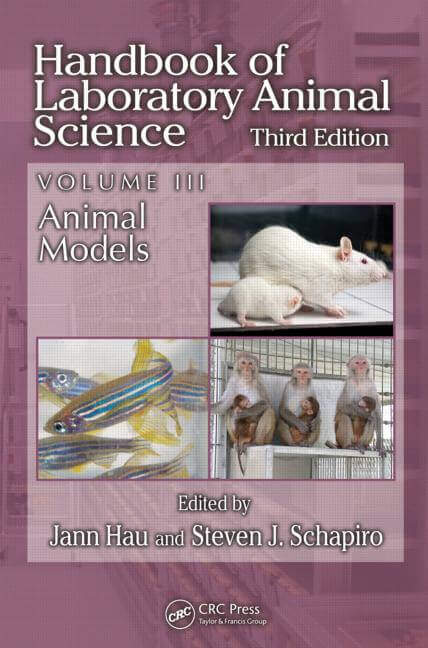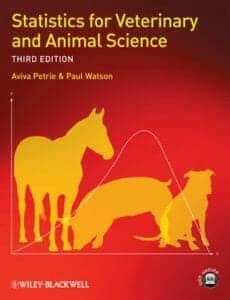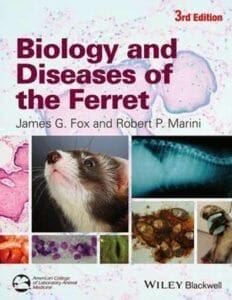Handbook of Laboratory Animal Science, 3rd Edition (Volume 1-3)

By Jann Hau and Steven J. Schapiro
Laboratory animal testing provides most of our current knowledge of human physiology, microbiology, immunology, pharmacology, and pathology. From studies of genetics in fruit flies to studies of cellular processes in genetically modified mice to recent dramatic developments in genetics, translational research, and personalized medicines, biomedical research involving animals remains absolutely essential for the advancement of the medical, veterinary, agricultural, and biological sciences and all rely on access to high-quality laboratory animals as models for humans.
Rooted in the principle that good science can only be performed in environments that promote good animal welfare, this third edition of the bestselling Handbook of Laboratory Animal Science, Vol. 1, Essential Principles and Practices emphasizes the importance of implementing the three R’s: replacing live animals with alternative methods, reducing the number of animals used, and refining techniques to minimize animal discomfort, and integrates these humane principles into almost every chapter.
See what’s new in the Third Edition:
- New chapters: Applications of Radio-Telemetry in Small Laboratory Animals, Generation and analysis of genetically modified mice, and Physiological, Hematological, and Clinical Chemistry Parameters
- Additional mateiral on the international harmonization of practices and on the continued implementation of the refinement, reduction, and replacement of animal usage in laboratories
- Sixteen page color insert
Relevant to virtually all areas of laboratory science and forming the cornerstone of laboratory animal science, each individual chapter focuses on an important subdiscipline of laboratory animal science including humane laws and guidelines; non-surgical, surgical, microsurgical, and post-mortem procedures; genetic modification; nutrition, feeding, and environmental factors; experiment design and alternative methods; and analgesia, anesthesia, and euthanasia. Each chapter can be read in series or as a stand alone text.
A truly international effort from world renowned contributors, Handbook of Laboratory Animal Science, Vol. 1, Essential Principles and Practices, Third Edition is useful as a textbook in laboratory animal science courses for postgraduate and undergraduate students, as a handbook for scientists who work with animals in their research, and for university veterinarians, regulators, and other specialists in laboratory animal science.

Biomedical research involving animals remains essential for the advancement of the medical, veterinary, agricultural, and biological sciences. Following in the footsteps of its predecessors, the Handbook of Laboratory Animal Science, Volume II, Third Edition: Animal Models explains in great detail the comparative considerations underlying the choice of animal species and strains in different research disciplines.
Efficient and humane experimental work with animals, in which subjects experience no avoidable pain and mental distress, requires skillful and conscientious staff. To this end, scientists apply the three R’s: replacing experiments on live animals with alternative methods, reducing the number of animals necessary to obtain valid results within experiments, and refining techniques to minimize the discomfort experienced by the animal participants.

While replacing and reducing the use of laboratory animals are integral parts of the 3Rs—replace, reduce, refine—which form the cornerstones of laboratory animal science, biomedical research involving animals remains absolutely essential for the advancement of the medical, veterinary, agricultural, and biological sciences. Building upon the bestselling previous edition, the Handbook of Laboratory Animal Science, Volume III, Third Edition: Animal Models complements volumes I and II of the third edition by completing the task of providing a comprehensive overview of animal models in all biomedical disciplines.
The three Rs have been integrated throughout this handbook to promote efficient and humane experimental work with animals. Written by international experts, each chapter focuses on an important subdiscipline of laboratory animal science and can be used as a stand-alone text. This volume contains new chapters for six additional disease animal models: spinal cord injury, cardiovascular diseases, sudden infant death syndrome, developmental disorders, eye diseases, and human cancer. It also presents a new chapter on applying reduction and refinement to animal models.
This handbook can be used for undergraduate and postgraduate laboratory animal science courses, and as a handbook for scientists who work with animals in their research, for university veterinarians, for regulators, and for other specialists in laboratory animal science.
This Book is Available For Premium Members Only













![Ettinger’s Textbook of Veterinary Internal Medicine 9th Edition [PDF+Videos] Ettinger’s Textbook of Veterinary Internal Medicine 9th Edition [True PDF+Videos]](https://www.vet-ebooks.com/wp-content/uploads/2024/10/ettingers-textbook-of-veterinary-internal-medicine-9th-edition-100x70.jpg)

![Textbook of Veterinary Diagnostic Radiology 8th Edition [PDF+Videos+Quizzes] Thrall’s Textbook of Veterinary Diagnostic Radiology, 8th edition PDF](https://www.vet-ebooks.com/wp-content/uploads/2019/09/textbook-of-veterinary-diagnostic-radiology-8th-edition-100x70.jpg)






